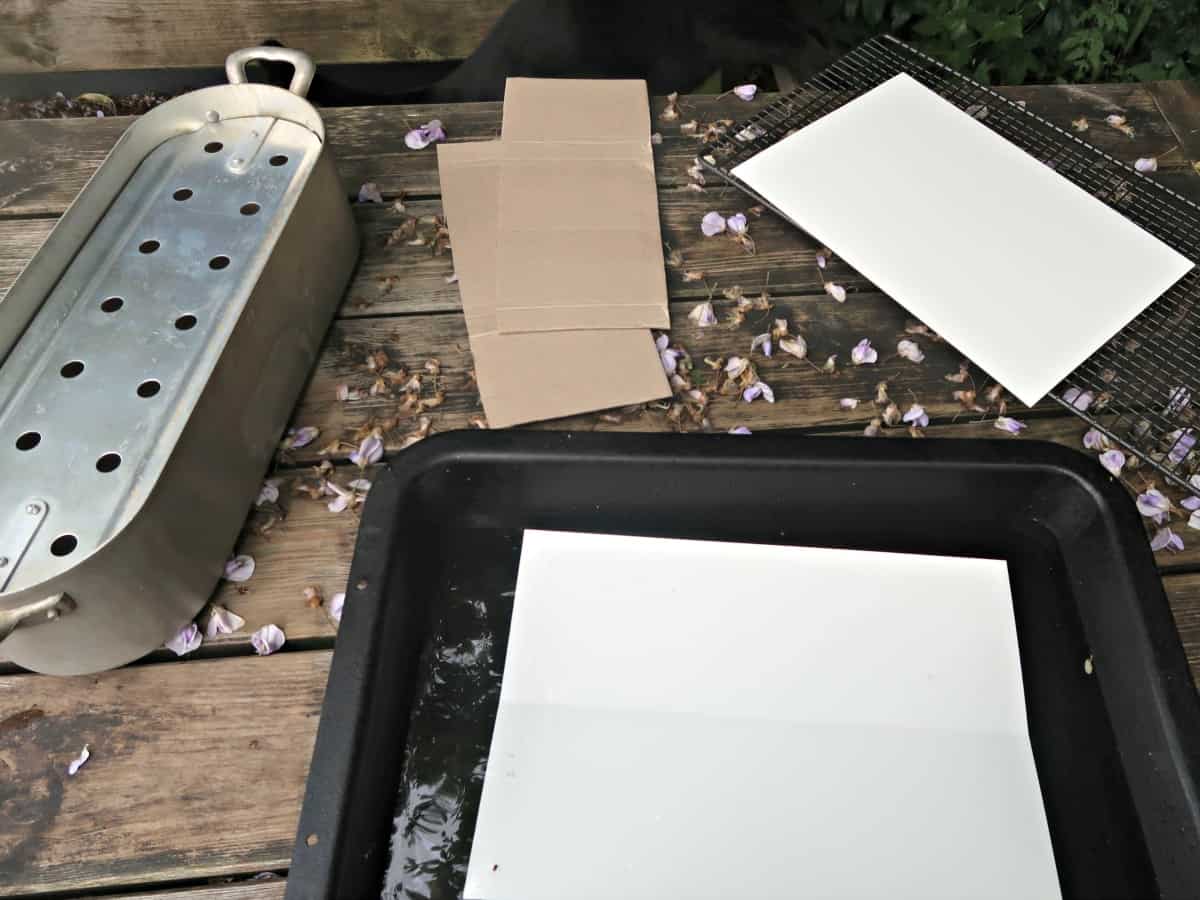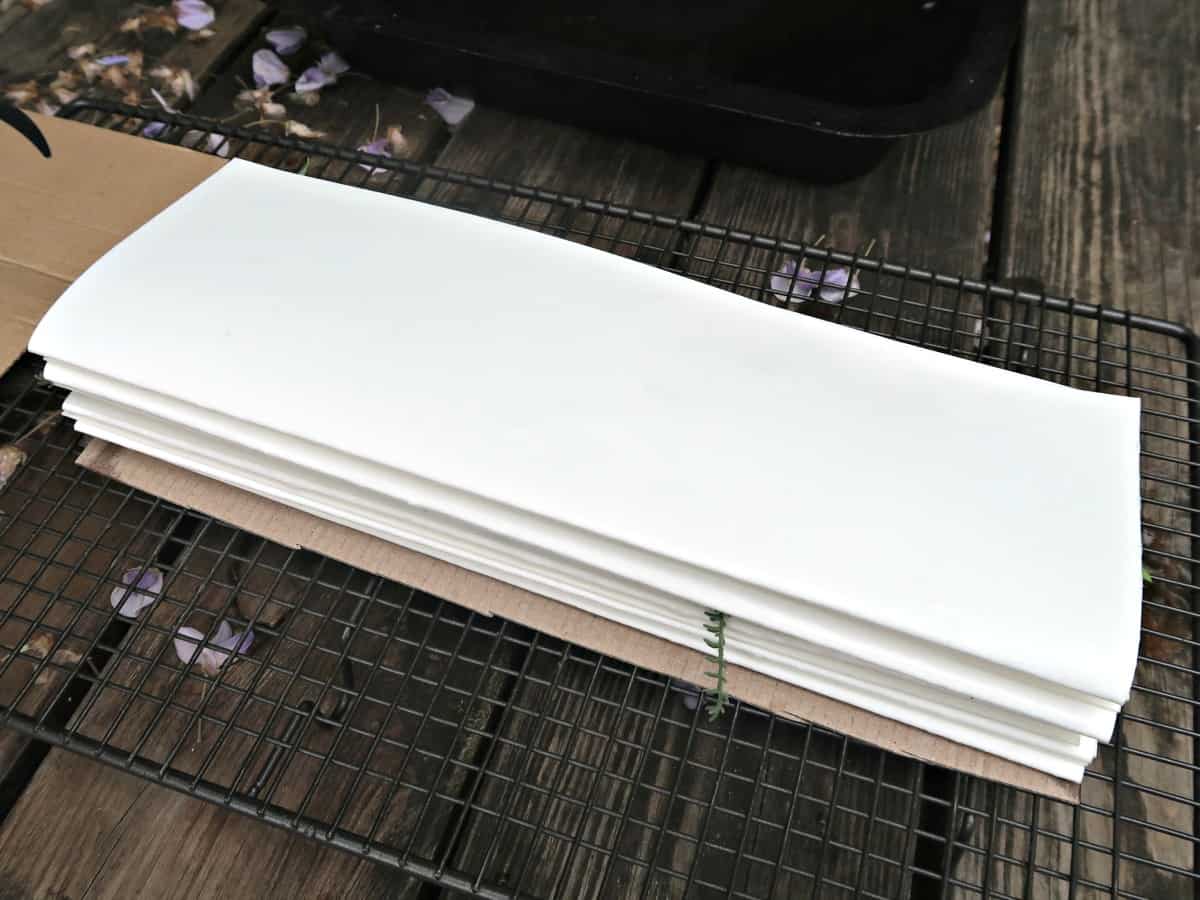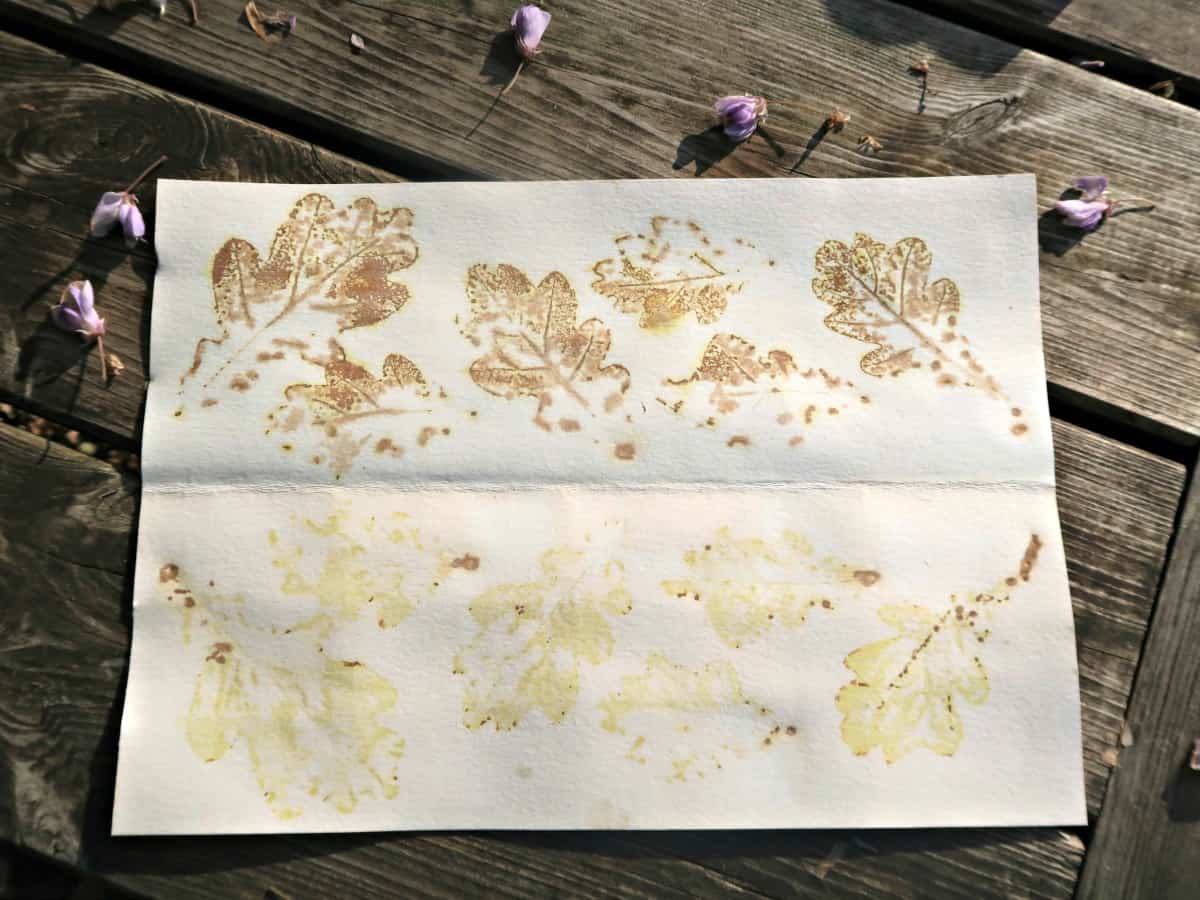
The general consensus seems to be that you should use a mordant to encourage the colours to stick when making eco-prints. Alum (potassium aluminium sulfate) (Amazon affiliate link) appears to be the mordant of choice so I dutifully ordered some along with some acid-free watercolour paper (Amazon affiliate link) which I hoped would be robust enough to cope with the steaming.
After deciding there was no way that I was going to get the A4 paper into our small round vegetable steamer I hunted around for an alternative. I bought this old fish kettle years ago at a car boot sale, and it’s sat on the top of a cupboard ever since so I am delighted that it is finally getting some use! We could fit our paper in the steamer by folding it lengthways, so that’s what we decided to do.


And here are our finished eco prints




7 comments
Seems like I’ve also heard of making eco prints by hammering the leaves and flowers between 2 pieces of paper. When you finish you have the plant prints on the top and bottom pieces of paper. That’s really all I can remember about it but it sounds interesting and fun. Thanks for your wonderful ideas.
Hi, Sarah
Where did you get the huge horizontal steamer?
I’d really love to get a hold of one :)
Thank you
Hi Joceline. It’s a fish kettle and I picked it up second hand at a car boot sale years ago. I do see them in charity shops (thrift stores) quite often and also second hand on ebay if you want one quickly :)
Wow Sarah, I’ve just done some eco printing too but we didn’t add any Alum. The prints seem to be fine after drying. I need to try it next time to see if the colours are more intense.
I saw your prints Michelle and they are gorgeous – and the artwork that you added is stunning as always :)
They are so pretty! What is Alum?
Alum is potassium aluminum sulfate which is a salt that is used quite a lot in dyeing as it encourages the dye to stick. It’s also used for a whole host of others things including medical uses and cosmetics and I believe it is sometimes used in pickling (although I have never used it for anything like that!)